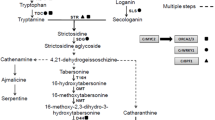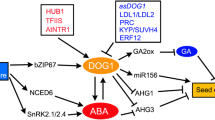Abstract
Neurotransmitters are found not only in animals, but also in other living organisms, including plants. However, the data on the functions of these compounds in the plant world are far from being comprehensive. In particular, the issue concerning their impact on plant cell death still demands further research. In the present study, we tested the effects of neurotransmitters on programmed cell death and the formation of reactive oxygen species (ROS) in plants. Programmed cell death was estimated from the destruction of cell nuclei. ROS was determined using 2′,7′-dichlorofluorescein. Dopamine, norepinephrine, serotonin, histamine, acetylcholine and acetylthiocholine (its synthetic analog) were used. The catecholamines dopamine and norepinephrine suppressed KCN-induced destruction of guard cell nuclei in the pea leaf epidermis at concentrations of 0.01–1 mM. In contrast, serotonin and acetylcholine (1–3 mM) promoted the destruction of nuclei that was induced by KCN. Histamine and acetylthiocholine had no effect on KCN-induced destruction of nuclei at concentrations of 0.01–3 mM. Unlike natural neurotransmitters, acetylthiocholine (3 mM), caused the destruction of guard cell nuclei even when KCN was absent. Dopamine, norepinephrine, and serotonin reduced menadione-induced ROS formation in the pea leaf epidermis. No similar effect was observed with histamine, acetylcholine, and acetylthiocholine. Therefore, dopamine, norepinephrine, and serotonin possess antioxidant properties in plants. In addition, dopamine and norepinephrine prevent cell death.



Similar content being viewed by others
REFERENCES
Roshchina, V.V., Neirotransmittery – biomediatory i regulyatory rastenii (Neurotransmitters—Biomediators and Plant Regulators), Pushchino: Inst. Biofiz. Kletki Ross. Akad. Nauk, 2010.
Simons, F.E.R. and Simons, K.J., Histamine and H1-antihistamines: Celebrating a century of progress, J. Allergy Clin. Immunol., 2011, vol. 128, no. 6, pp. 1139–1150.E4.
Roshchina, V.V., Evolutionary considerations of neurotransmitters in microbial, plant, and animal cells, in Microbial Endocrinology: Interkingdom Signaling in Infectious Disease and Health, Lyte, M., and Freestone, P.P.E., Eds., New York: Springer-Verlag, 2010, pp. 17–52.
Kulma, A. and Szopa, J., Catecholamines are active compounds in plants, Plant Sci., 2007, vol. 172, no. 3, pp. 433–440.
Erland, L.A.E. and Saxena, P.K., Melatonin and serotonin in plant morphogenesis and development, in Neurotransmitters in Plants: Perspectives and Applications, Ramakrishna, A., and Roshchina, V.V., Eds., Boca Raton: CRC Press, 2018, pp. 57–70.
Ramakrishna, A. and Mukherjee, S., New insights on neurotransmitter signaling mechanisms in plants, Plant Signaling Behav., 2020, vol. 5, no. 6, p. 1737450.
Vitale, I., Pietrocola, F., Guilbaud, E., et al., Apoptotic cell death in disease – Current understanding of the NCCD 2023, Cell Death Differ., 2023, vol. 30, no. 5, pp. 1097–1154.
Mukhtar, M.S., McCormack, M.E., Argueso, C.T., and Pajerowska-Mukhtar, K.M., Pathogen tactics to manipulate plant cell death, Curr. Biol., 2016, vol. 26, no. 13, pp. R608–R619.
Van Hautegem, T., Waters, A.J., Goodrich, J., and Nowack, M.K., Only in dying, life: programmed cell death during plant development, Trends Plant Sci., 2015, vol. 20, no. 2, pp. 102–113.
Pitsili, E., Phukan, U.J., and Coll, N.S., Cell death in plant immunity, Cold Spring Harbor Perspect. Biol., 2020, vol. 12, no. 6, p. a036483.
Ye, C., Zheng, S., Jiang, D., Lu, J., Huang, Z., Liu, Z., Zhou, H., Zhuang, C., and Li, J., Initiation and execution of programmed cell death and regulation of reactive oxygen species in plants, Int. J. Mol. Sci., 2021, vol. 22, no. 23, p. 12942.
Samuilov, V.D., Lagunova, E.M., Kiselevsky, D.B., Dzyubinskaya, E.V., Makarova, Ya.V., and Gusev, M.V., Participation of chloroplasts in plant apoptosis, Biosci. Rep., 2003, vol. 23, nos. 2–3, pp. 103–117.
LeBel, C.P., Ischiropoulos, H., and Bondy, S.C., Evaluation of the probe 2',7'-dichiorofluorescin as an indicator of reactive oxygen species formation and oxidative stress, Chem. Res. Toxicol., 1992, vol. 5, no. 2, pp. 227–231.
Wrona, M., Patel, K., and Wardman, P., Reactivity of 2',7'-dichlorodihydrofluorescein and dihydrorhodamine 123 and their oxidized forms toward carbonate, nitrogen dioxide, and hydroxyl radicals, Free Radical Biol. Med., 2005, vol. 38, no. 2, pp. 262–270.
Karlsson, M., Kurz, T., Brunk, U.T., Nilsson, S.E., and Frennesson, C.I., What does the commonly used DCF test for oxidative stress really show?, Biochem. J., 2010, vol. 428, no. 2, pp. 183–190.
Goldberg, B. and Stern, A., Production of superoxide anion during the oxidation of hemoglobin by menadione, Biochim. Biophys. Acta, 1976, vol. 437, no. 2, pp. 628–632.
Hassan, H.M. and Fridovich, I., Intracellular production of superoxide radical and of hydrogen peroxide by redox active compounds, Arch. Biochem. Biophys., 1979, vol. 196, no. 2, pp. 385–395.
Szilagyi, J.T., Fussell, K.C., Wang, Y., Jan, Y.H., Mishin, V., Richardson, J.R., Heck, D.E., Yang, S., Aleksunes, L.M., Laskin, D.L., and Laskin, J.D., Quinone and nitrofurantoin redox cycling by recombinant cytochrome b5 reductase, Toxicol. Appl. Pharmacol., 2018, vol. 359, pp. 102–107.
Kobayashi, Y. and Heber, U., Rates of vectorial proton transport supported by cyclic electron flow during oxygen reduction by illuminated intact chloroplasts, Photosynth. Res., 1994, vol. 41, no. 3, pp. 419–428.
Huseynova, I.M., Aliyeva, D.R., and Aliyev, J.A., Subcellular localization and responses of superoxide dismutase isoforms in local wheat varieties subjected to continuous soil drought, Plant Physiol. Biochem., 2014, vol. 81, pp. 54–60.
Dzyubinskaya, E.V., Kiselevsky, D.B., Bakeeva, L.E., and Samuilov, V.D., Programmed cell death in plants: Effect of protein synthesis inhibitors and structural changes in pea guard cells, Biochemistry (Moscow), 2006, vol. 71, no. 4, pp. 395–405.
Dzyubinskaya, E.V., Kiselevsky, D.B., Lobysheva, N.V., Shestak, A.A., and Samuilov, V.D., Death of stoma guard cells in leaf epidermis under disturbance of energy provision, Biochemistry (Moscow), 2006, vol. 71, no. 10, pp. 1120–1127.
Tunçel, N., Aydin, Y., and Tikiz, H., The effect of three products of cigarette smoke (cyanide, thiocyanate and nicotine) on the concentration-response curves of 5-hydroxytryptamine, norepinephrine and epinephrine in the isolated human umbilical veins and arteries, Pharmacol. Toxicol., 1994, vol. 74, no. 2, pp. 84–88.
Held, K.D., Sylvester, F.C., Hopcia, K.L., and Biaglow, J.E., Role of Fenton chemistry in thiol-induced toxicity and apoptosis, Radiat. Res., 1996, vol. 145, no. 5, pp. 542–553.
Van Noorden, C.J. and Butcher, R.G., The involvement of superoxide anions in the nitro blue tetrazolium chloride reduction mediated by NADH and phenazine methosulfate, Anal. Biochem., 1989, vol. 176, no. 1, pp. 170–174.
Kagan, V.E. and Tyurina, Y.Y., Recycling and redox cycling of phenolic antioxidants, Ann. N. Y. Acad. Sci., 1998, vol. 854, no. 1, pp. 425–434.
Duthie, G. and Crozier, A., Plant-derived phenolic antioxidants, Curr. Opin. Lipidol., 2000, vol. 11, no. 1, pp. 43–47.
Rahman, M.M., Rahaman, M.S., Islam, M.R., Rahman, F., Mithi, F.M., Alqahtani, T., Almikhlafi, M.A., Alghamdi, S.Q., Alruwaili, A.S., Hossain, M.S., Ahmed, M., Das, R., Emran, T.B., and Uddin, M.S., Role of phenolic compounds in human disease: current knowledge and future prospects, Molecules, 2021, vol. 27, no. 1, p. 233.
Liu, Q., Gao, T., Liu, W., Liu, Y., Zhao, Y., Liu, Y., Li, W., Ding, K., Ma, F., and Li, C., Functions of dopamine in plants: a review, Plant Signal. Behav., 2020, vol. 15, no. 12, p. 1827782.
Yen, G.-C. and Hsieh, C.-L., Antioxidant effects of dopamine and related compounds, Biosci. Biotechnol. Biochem., 1997, vol. 61, no. 10, pp. 1646–1649.
Erland, L.A.E., Turi, C.E., and Saxena, P.K., Serotonin: An ancient molecule and an important regulator of plant processes, Biotechnol. Adv., 2016, vol. 34, no. 8, pp. 1347–1361.
Huether, G. and Schuff-Werner, P., Platelet serotonin acts as a locally releasable antioxidant, Adv. Exp. Med. Biol., 1996, vol. 398, pp. 299–306.
Kalyanaraman, B., Felix, C.C., and Sealy, R.C., Peroxidatic oxidation of catecholamines. A kinetic electron spin resonance investigation using the spin stabilization approach, J. Biol. Chem., 1984, vol. 259, no. 12, pp. 7584–7589.
Siraki, A.G. and O’Brien, P.J., Prooxidant activity of free radicals derived from phenol-containing neurotransmitters, Toxicology, 2002, vol. 177, no. 1, pp. 81–90.
Sango, J., Kakihana, T., Takahashi, M., Katsuragi, Y., Anisimov, S., Komatsu, M., and Fujii, M., USP10 inhibits the dopamine-induced reactive oxygen species-dependent apoptosis of neuronal cells by stimulating the antioxidant Nrf2 activity, J. Biol. Chem., 2022, vol. 298, no. 1, p. 101448.
Jodko-Piórecka, K. and Litwinienko, G., Antioxidant activity of dopamine and L-DOPA in lipid micelles and their cooperation with an analogue of α-tocopherol, Free Radical Biol. Med., 2015, vol. 83, pp. 1–11.
Gomes, B.R., Siqueira-Soares, R.de C., Dos Santos, W.D., Marchiosi, R., Soares, A.R., and Ferrarese-Filho, O., The effects of dopamine on antioxidant enzymes activities and reactive oxygen species levels in soybean roots, Plant Signaling Behav., 2014, vol. 9, no. 12, p. e977704.
Funding
The research was carried out as part of the Scientific Project of the State Order of the Government of Russian Federation to Lomonosov Moscow State University no. 121042600047-9.
Author information
Authors and Affiliations
Corresponding author
Ethics declarations
ETHICS APPROVAL AND CONSENT TO PARTICIPATE
This work does not contain any studies involving human and animal subjects.
CONFLICT OF INTEREST
The authors of this work declare that they have no conflicts of interest.
Additional information
Translated by D. Martynova
Publisher’s Note.
Allerton Press remains neutral with regard to jurisdictional claims in published maps and institutional affiliations.
About this article
Cite this article
Kiselevsky, D.B., Oleskin, A.V. & Samuilov, V.D. The Effect of Neurotransmitters on Programmed Cell Death and Formation of Reactive Oxygen Species in the Pea Leaf Epidermis. Moscow Univ. Biol.Sci. Bull. 78, 205–211 (2023). https://doi.org/10.3103/S0096392523600710
Received:
Revised:
Accepted:
Published:
Issue Date:
DOI: https://doi.org/10.3103/S0096392523600710




